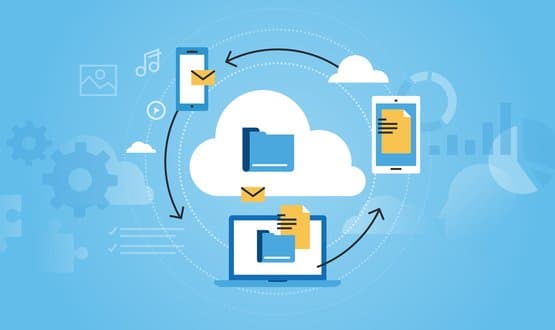All tooned up
- 13 May 2010
 Six months ago, Newcastle Upon Tyne Hospitals NHS Foundation Trust became the first in the country to implement an electronic patient record system outside the National Programme for IT in the NHS.
Six months ago, Newcastle Upon Tyne Hospitals NHS Foundation Trust became the first in the country to implement an electronic patient record system outside the National Programme for IT in the NHS.
The trust turned the national programme upside down when it contracted for a Cerner Millennium system to be implemented by University of Pittsburgh Medical Centre.
When E-Health Insider visited the Freeman Hospital shortly after the go-live at the end of November last year, there was considerable excitement among trust staff. But six months on, has the novelty worn off?
Record speed roll-out
Since the last visit, the trust has continued to use its Cerner Millennium patient administration system and completed the roll-out of medicines management across 27 wards at a rate of 2-3 wards per week. More than 90,000 prescriptions are now being sent electronically.
It has also finished the roll-out of order communications across the Freeman, with more than 63,000 haematology tests requested electronically in the last six months.
The implementation team has still to complete specialist areas for medicines management, such as ICU and paediatrics. This will happen once they have implemented medications management at the Royal Victory Infirmary.
Still, the work seems well on the way when I meet Steve Leggetter, e-records programme director at the General Hospital, where the A&E department is based.
“The deployment has been a key focus of the whole organisation for 12 months – and for those 12 months we have not stood still. We have three very different hospitals that have three different cultures,” Leggetter says.
To add to the complexity of deploying a multi-million pound EPR system across three hospitals, the trust is in the process of moving services out of The General to its new wings at The Royal Infirmary and the Freeman.
“Meds won’t be going live at The General but we’ve reaped the benefits of having order comms live at the Freeman so are rolling out that functionality here, ” Leggetter says. “And staff are using the system for the first time right in front of me, with 11 departments going live today.”
Softening the blow
Thomas Webb, e-records project manager, adds: “Neurology and paediatrics have gone live relatively problem free, so far. It’s important not to force it on people. So even though all the sisters are trained up and ready, it’s a fairly relaxed environment where we say ‘if you can’t do it then just do it on paper and we’ll show you how to do it later’.”
The trust has reverted most of its support back to the helpdesk but still has floorwalkers offering training and help on days when the trust is going live in certain areas.
Standing outside ICU, Christine Straughan, a sister on the critical care ward says the first few orders went through in the morning, but it’s too crowded to go in and see the system in action. Leggetter adds: "Running an ICU in an old hospital such as the General can be very cramped. Using a computer on wheel sin areas like this can sometimes feel like pushing a trolley on an aeroplane.”
It appears that this is where EPR may not be all that practical, where computers on wheels, laptops and desktops take up too much space compared to a clipboard at the end of the bed.
Leggetter adds: “Computers on wheels are invaluable for doing the meds round but we are recognising that there are other devices that we can use, for example we’re looking bedside units instead.”
Going solo
Another major change since the last visit to the trust is the presence of Cerner and UPMC staff on site – or lack of them. When the trust went live, there were 40 supplier staff on site but two months on the trust has been left to its own devices.
While the trust could not be sure of how this would differ if it was inside NPfIT, Leggetter said it has given it the chance to make sure its support models are stable within the clinical informatics team, before moving to the much larger RVI hospital.
Andrew Heed, lead pharmacist at the trust says: “It’s nice to have the ownership of the system but at the same time I think we could do with just one or two supplier staff around, just to know that they are there.”
And when asked whether there have been any real issues with the system, he says: “There was a slight issue with the PAS around Christmas, where people felt a bit uncomfortable with the system but that was resolved with further training.
“We find that when we go-live there are three peaks where support is needed; the initial go-live, 4-5 days later when there is a shift change and then after two weeks when staff are really familiar with the system and question how they can use it in different ways.”
The trust says that it has been hitting its 18 week targets since the go-live and has not experienced the huge problems that some London trust encountered after going-live with Millennium within the programme.
Pulling the plug
Even though more than 2,500 staff are using the Cerner system and accessing its functionality on average four times per day, the trust has yet to switch off its McKesson PAS.
Leggetter says: “We’re still in the process of a tactical withdrawal, taking people off of the system that no longer need to be on it. If I had to put a timescale on switching it off, I’d say 2-3 months. We have realised the business benefits from it being ‘read-only’ and as of the 1st of April switched to the support model, which is free of charge.”
A long way to go
Moving into the reception for A&E, it’s clear that there is also still a lot of paper around. A huge storage cupboard has thousands of CAS cards overflowing from their racks. And across the desk a paramedic gives the administrator a hand over sheet from the ambulance.
One of the nurses adds: “What we want now is all the clerking into the system. We still have hand written CAS cards and it’s just not viable to do things by paper anymore. The world of paper is dying a death very quickly.”
Leggetter reassures her: “We can’t do everything at once, the vision is that as we become more joined up the information from the ambulance will be in the system before the patient arrives and we’ll start looking around the trust, as you are, saying why is that piece of paper there and how can we get rid of it?”
Forward thinking
The trust is now focusing on moving the functionality that it has mastered at the Freeman and General to the RVI, which has only seen the benefits of moving from McKesson to the more real-time Cerner PAS.
The trust will implement medicines management in an aggressive roll-out starting with ICU, which will then be followed by the roll-out of order comms throughout the summer.
“From there it would mean all inpatients are live on order comms and then we’re very excited about. Implementing the messaging centre, when results can be signed off electronically, that will be a real prize for us,” Leggetter says.
The trust is also planning ahead for the migration of systems from one site to another and how it is going to deal with running two A&E sites at the same time.
“The thing with Cerner Millennium is that it has so many features that the work will continue while we explore all the functionality that what we haven’t switched on,” Leggetter concludes.
More from Newcastle:
Watch our video interview with Steve Leggetter in EHI TV.
Six months ago:
Read about Sarah’s earlier visit to Newcastle in Tooning up Millennium.




